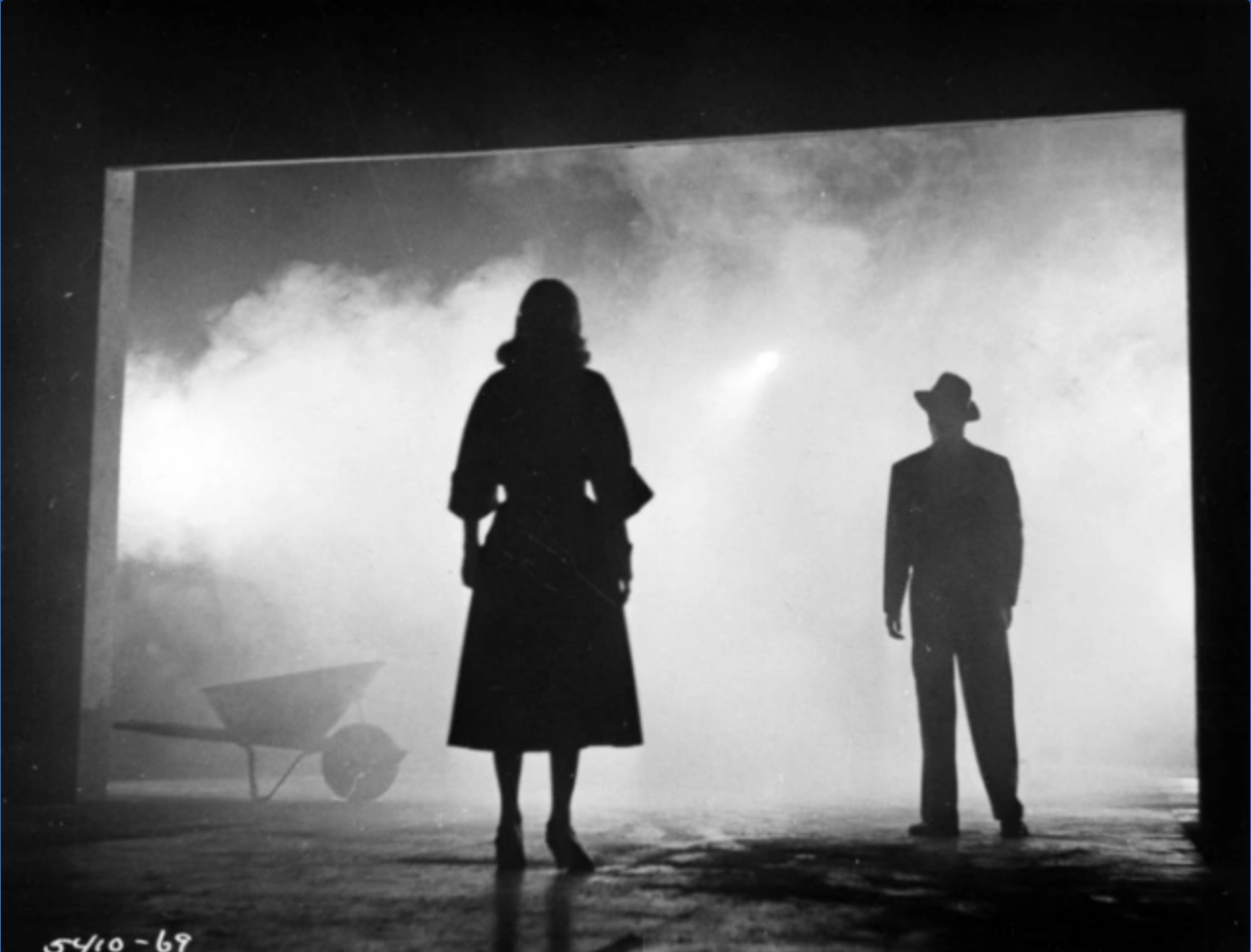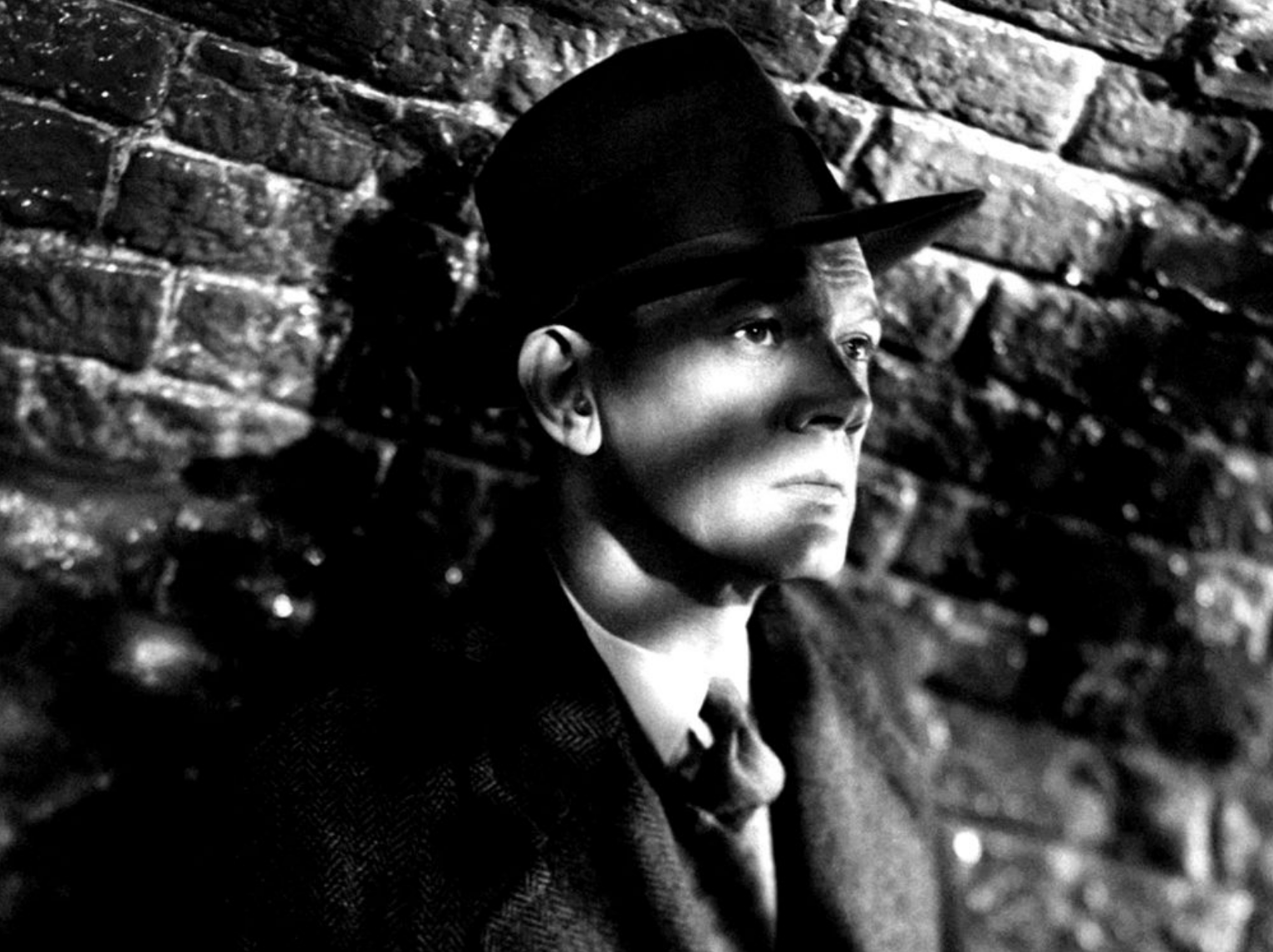Film Noir: Lessons from Beyond the Shadows
Still from ‘The Big Combo’
'Yes, I killed him. I killed him for money - and a woman. And I didn’t get the money and I didn’t get the woman. Pretty, isn’t it?’
'Double Indemnity’
I recently watched an entertaining documentary series about the history of Film Noir. (‘Film Noir’, Sky Arts)
Film Noir is a term used to describe a broad category of crime thrillers from the 1940s, ‘50s and beyond. Noir is characterised by strange angles, harsh light and dark shadows; by victims of circumstance, flawed heroes and seductive femmes fatales; by innovative storytelling, psychological insight and a pessimistic view of society.
‘That’s not the way to win.’
‘Is there a way to win?’
‘There’s a way to lose more slowly.’
'Out of the Past'
Let us consider what Noir could teach us today – lessons from beyond the shadows.
1. Question Society and Your Role within It
The term Film Noir was coined by French film critic Nino Frank in 1946 and became popular amongst European intellectuals in the 1950s. It was only used in the United States after the late 1960s.
Noir had its origins in German Expressionist cinema. With society reeling from the defeat and destruction of the First World War, filmmakers expressed uncertainty about hierarchies and tradition; about the impact of industrialisation and technological progress. Prompted by Freud, they were concerned with identity and the subconscious; with what lay beneath the surface.
Films like ‘The Cabinet of Dr Caligari’ (1920), ‘Nosferatu’ (1922), ‘Dr Mabuse the Gambler’ (1922) and ‘M’ (1931) presented a warped world of doubts and dreams; an unstable cityscape haunted by deranged hypnotists and masters of disguise; a culture where ordinary people could be killers.
'You know, this’ll be the first time I’ve ever killed anyone I knew so little and liked so well.’
'Murder, My Sweet’
2. Criminals Can Be Fascinating
The rise of Nazism in 1930s Germany prompted many Jewish and liberal filmmakers to flee the country. A vibrant emigree community of directors, screenwriters and cinematographers formed in Hollywood. Their ranks included many who would go on to play a significant role in Film Noir: Otto Preminger, Max Ophuls, Douglas Sirk, Billy Wilder, Robert Siodmak, Fritz Lang and more besides.
The innovations of German cinema in the 1920s were taken up by the Universal horror movies of the 1930s. Films like ‘Dracula’ (1931), ‘Frankenstein’ (1931) and ‘The Mummy’ (1932) came drenched in shadows as they explored myths, nightmares and the nature of evil.
In the wake of Prohibition and the Depression, the United States had seen the rise of crime, corruption and the Mob. A cynical view of an unhinged society was played out in the hardboiled fiction of Raymond Chandler, James M Cain and Dashiell Hammett; and evidenced in sensationalist newspaper stories and graphic street photography.
'I’ve been rich and I’ve been poor. Believe me, rich is better.’
'The Big Heat'
Warner Brothers’ classic gangster films of this period - like ‘Little Caesar’ (1931), ‘Public Enemy’ (1931) and ‘Scarface’ (1932) - acknowledged that criminals were often ordinary people struggling to survive in extraordinary times; that despite their evil deeds, they could be fascinating.
‘After all, crime is only a left-handed form of human endeavour.’
'The Asphalt Jungle'
Still from ‘Out of the Past’
3. Heroes Can Be Flawed
Film Noir was born with America’s entry into the Second World War and was nourished by the alienation and anxiety of the era.
Noir movies were populated by veterans, cops and crooks; by hapless grifters, gormless heavies and wrongly accused innocents. There were hard-bitten detectives like Philip Marlowe and Sam Spade – cynical, world-weary loners who drank and smoked, and were sustained by a sense of duty and a residue of idealism. There was Robert Mitchum in his battered trench coat - at once both menacing and vulnerable. And Humphrey Bogart in double-breasted suit and fedora - tough and stubborn, with an insolent charm.
‘You know what he’ll do when he comes back? Beat my teeth out, then kick me for mumbling.’
'The Big Sleep'
These men were under pressure from without and within. How would they deal with the troubles that fate threw at them? Could they pull through?
4. Glamour Can Be Dangerous
In addressing their trials, the male protagonists often encountered femmes fatales - siren creatures that were both alluring and manipulative; glamorous and dangerous.
‘She can’t be all bad. No one is.’
‘Well, she comes the closest.’
'Out of the Past'
Any man that fell for the charms of a femme fatale was in trouble. Relationships were cursed, doomed to failure.
‘I was born when she kissed me. I died when she left me. I lived a few weeks while she loved me.’
'In a Lonely Place'
Of course, the femme fatale archetype was very much an expression of masculine anxiety. Some say veterans returning from the war had forgotten how to engage with women.
‘I was warned.’
‘You mean you’re afraid… of me?’
‘The Woman in the Window’
It’s important to observe that, played by the likes of Joan Bennett, Barbara Stanwyck, Jane Greer and Veronica Lake, the women in Film Noir were smart, resilient and independent. They were navigating the same mean streets as the male characters. They had to do what they had to do.
'What I like about you is you’re rock bottom. I wouldn’t expect you to understand this, but it’s a great comfort for a girl to know she could not possibly sink any lower.'
'The Big Steal’
Still from from ‘The Lady from Shanghai’
5. Shadows and Light Create Tension and Fear
The action was played out on rain-sodden streets and in dark deserted alleyways; in shabby bars, seedy nightclubs and opulent apartments.
'Kiss me, Mike. I want you to kiss me. The liar’s kiss that says I love you and means something else.’
'Kiss Me Deadly’
The artificial light of neon signs and streetlamps was harsh. Everywhere, inside and out, there were long shadows: at the deserted doorway, in the dingy stairwell, across the empty parking lot; shadows cast by mysterious figures and menacing hoods, by banisters and venetian blinds; shadows that fell across troubled faces.
'Come on, read my future for me.'
'You haven't got any.'
'What do you mean?'
'Your future is all used up.’
’Touch of Evil’
These shadows prompted foreboding and fear. And the atmosphere of paranoia was often enhanced by low, wide or tilted camera angles; by frequent recourse to mirrored reflections and close-ups on the characters’ apprehensive expressions.
'When your head says one thing and your whole life says another, your head always loses.’
'Key Largo'
Still from ‘Touch of Evil’
6. Style Trumps Story
Film Noir plots were often labyrinthine. (Try explaining ‘The Maltese Falcon’, ‘The Big Sleep’ or ‘DOA.’) There were coincidences, red herrings and MacGuffins aplenty. Characters came and went. They were deceived and double-crossed. Events spiralled out of control.
'We didn’t exactly believe your story, Miss O’Shaughnessy. We believed your two hundred dollars. I mean, you paid us more than if you’d been telling us the truth, and enough more to make it all right.’
'The Maltese Falcon'
Ultimately style trumped story. The perilous settings, confused narratives, woozy angles and stark lighting conspired to express the psychological disorder at the heart of the film.
'You're never around when I need you.'
'You never need me when I'm around.’
'Kiss Me Deadly’
7. Restrictions Liberate
Often Film Noirs were B-Movies, created on low budgets by small studios. But imaginative directors demonstrated that restrictions could be liberating.
Edgar G Ulmer had to make ‘Detour’ (1945) in 6 days with $117k. He was allocated just 15 thousand feet of film and required to shoot within a 15-mile radius of the studio. Despite all this, he managed to create a compelling tale of a doomed hitchhiker’s encounters with death and deception.
'That’s life. Whichever way you turn, fate sticks out a foot to trip you.’
‘Detour’
For ‘Side Street’ (1950) Anthony Mann employed the lighter cameras that had emerged during the Second World War to shoot on location in New York. The film moved freely through the streets, cut to dramatic overhead shots and culminated in one of the first modern car chases.
'Take that fifteen grand out of your pants or get out! I got a dinner date.'
‘Side Street’
‘Narrow Margin’ (1952) was shot in 13 days, and most of the action took place in a railway carriage. To save money, the train sets were rigidly fixed to the floor and a hand-held camera was moved to simulate motion. It became RKO's biggest picture that year.
'This train's headed straight for the cemetery. But there's another one coming along, a gravy train. Let's get on it.'
‘Narrow Margin’
8. Find a Different Way to Reveal Your Narrative
Noir cinema was always looking at new ways of telling a story. It often employed first-person voiceover, flashbacks, fragmented narratives and multiple viewpoints. These techniques created an uncertain, dreamlike quality. Nothing was quite as it seemed.
‘Doesn’t it bother you at all that you’re married?’
‘What I want to know is, does it bother you?’
‘Gilda'
‘Laura’ (1944) featured a detective who falls in love with the victim of the murder he is investigating. ‘Sunset Boulevard’ (1950) began with the narrator lying face down dead in a swimming pool. ‘DOA’ (1950) commenced with a man reporting his own homicide to the cops. He has been poisoned and wants to track down his killer before the toxin takes effect. He will be ‘dead on arrival.’
'I want to report a murder.'
'Sit down. Where was this murder committed?'
'San Francisco, last night.'
'Who was murdered?'
'I was.'
‘DOA’
Film Noir fell out of favour in the 1960s. The genre lost out to a combination of television, Technicolor, affluence and youth culture. But its influence lived on. And you can detect the spirit of Noir in the shadows and cynicism of ‘Chinatown’(1974), ‘Blade Runner’(1982), ‘The Last Seduction’(1994) and ‘LA Confidential’(1997).
'A woman doesn't care how a guy makes a living, just how he makes love.’
’The Big Combo'
Communication professionals could still learn a great deal from Film Noir: about the power of mood and lighting; about the nuanced depiction of heroes and glamour; about liberating constraints and inventive storytelling; and about great writing.
'Maybe I’ll live so long that I’ll forget her. Maybe I’ll die trying.’
'The Lady from Shanghai'
'The shadows on the wall look like a railroad track.
I wonder if he's ever coming back.
The moon's a yellow stain across the sky.
Oh baby, this one's from the heart.
Maybe I'll go down to the corner and get a racing form.
But I should probably wait here by the phone.
And the brakes need adjustment on the convertible.
Oh baby, this one's from the heart.’
Crystal Gayle and Tom Waits, ’This One’s From the Heart’ (T Waits)
No. 406



